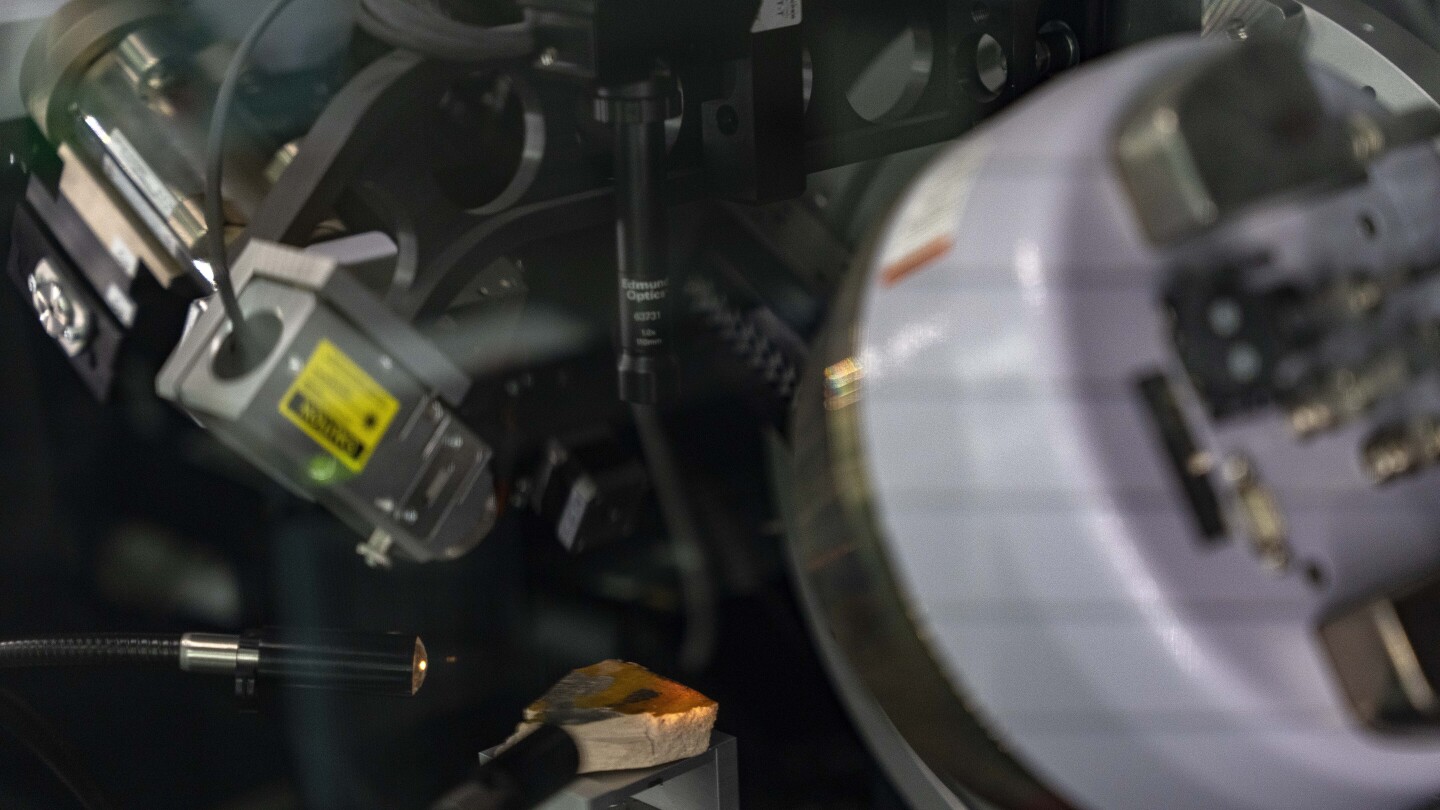Ancient Meets Modern: High-Tech Preservation Breathes New Life into Beijing's Imperial Treasures
Science
2025-03-24 02:33:53Content

Behind the ancient walls of Beijing's Forbidden City, a dedicated team of 150 master restorers is breathing new life into over 1.8 million historical treasures. Blending cutting-edge scientific techniques with time-honored traditional craftsmanship, these skilled conservators meticulously clean, repair, and preserve priceless artifacts that whisper stories of China's imperial past.
Their work is a delicate dance of precision and passion, where modern technology meets age-old restoration methods. Each relic is treated with extraordinary care, as these experts work tirelessly to protect and revive centuries-old objects that represent the rich cultural heritage of the Chinese imperial era. From delicate porcelain to intricate silk robes, no detail is too small, no artifact too fragile for their expert touch.
This remarkable team represents the pinnacle of cultural preservation, ensuring that the magnificent history of the Forbidden City continues to inspire and educate generations to come.
Preserving History: The Meticulous Art of Restoring China's Imperial Treasures
In the heart of Beijing, a remarkable team of conservation experts wages a silent battle against time, protecting and reviving one of the world's most significant cultural repositories. The Forbidden City, a testament to imperial grandeur, harbors millions of artifacts that whisper stories of China's rich historical legacy, each requiring extraordinary care and precision to maintain their historical integrity.Guardians of Cultural Heritage: Unraveling the Secrets of Preservation
The Complex Science of Artifact Restoration
Modern conservation represents a delicate dance between cutting-edge scientific techniques and traditional craftsmanship. Specialists employ advanced diagnostic tools like spectroscopic analysis, digital imaging, and molecular assessment to understand the intricate composition of each artifact. These technological marvels allow restorers to develop targeted preservation strategies that respect the original materials and historical context. Microscopic examinations reveal the subtle degradation patterns of ancient textiles, ceramics, and metalwork. Conservators meticulously map out chemical interactions, environmental stressors, and structural weaknesses that threaten these priceless relics. Each intervention becomes a carefully choreographed procedure, balancing minimal interference with comprehensive protection.Interdisciplinary Expertise in Cultural Preservation
The restoration team comprises a diverse group of professionals, including archaeologists, chemists, materials scientists, and traditional artisans. Their collaborative approach ensures a holistic understanding of each artifact's historical significance and physical characteristics. Historians provide contextual insights, while materials experts develop innovative stabilization techniques. Specialized training programs cultivate a new generation of conservation experts who blend technological proficiency with deep cultural respect. These professionals undergo rigorous academic and practical training, learning to navigate the complex ethical considerations of artifact restoration.Technological Innovations in Conservation
Cutting-edge technologies have revolutionized artifact preservation. Advanced 3D scanning creates precise digital replicas, allowing researchers to study fragile items without physical manipulation. Nanotechnology enables microscopic repairs, while climate-controlled environments prevent further deterioration. Artificial intelligence now assists in predictive conservation, analyzing vast datasets to anticipate potential degradation risks. Machine learning algorithms can predict environmental impacts and recommend preemptive conservation strategies, transforming reactive preservation into a proactive science.Challenges of Large-Scale Cultural Preservation
Managing a collection of 1.8 million artifacts presents unprecedented logistical challenges. Each item requires individualized assessment, with restoration processes potentially spanning months or even years. The sheer scale demands sophisticated inventory management systems and extensive resource allocation. Environmental factors like humidity, temperature fluctuations, and potential pollutants necessitate constant monitoring. Specialized storage facilities with advanced climate control systems protect these irreplaceable treasures from potential damage.Cultural and Economic Significance
Beyond preservation, these restoration efforts represent a profound commitment to national heritage. Each restored artifact tells a story, connecting contemporary society with its historical roots. The work transcends mere conservation, serving as a bridge between past and present, educating future generations about China's rich cultural tapestry. Moreover, these preservation efforts contribute significantly to cultural tourism and international scholarly exchange, positioning the Forbidden City as a global center of historical research and cultural understanding.RELATED NEWS
Science

Science Under Siege: How Trump's Orders Wage War on Research and Reality
2025-02-20 08:25:00
Science

Science Spectacular: Glasgow Festival Unveils Groundbreaking Lineup of Mind-Blowing Events
2025-04-29 05:53:28
Science

Disruptive Genius or Dangerous Interloper? Musk's Radical Science Shake-Up
2025-03-05 05:00:14





